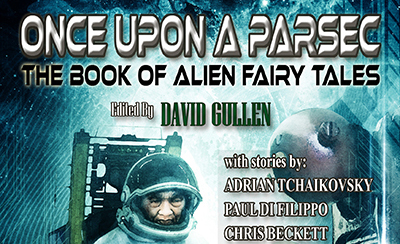I’m chuffed. Once Upon A Parsec has been shortlisted for a BFS 2020 award. This Book of Alien Fairy Tales was edited by David Gullen and published by NewCon Press and it’s where Alpha42 and the Space Hermits live.
The challenge was to write a non-human fairy tale or myth and I have to say it was surprisingly difficult. I chose an AI myth which meant I had to think especially carefully about the protagonist. Alpha42 was the result and I have to say I did develop strong feelings for Alpha42, probably because there’s quite a personal angle to the story.
Here’s hoping that Once Upon A Parsec wins this wonderful award.
Once Upon A Parsec: “Have you ever wondered what the fairy tales of alien cultures are like? For hundreds of years scholars and writers have collected and retold folk and fairy stories from around our world. They are not alone. On distant planets alien chroniclers have done the same. For just as our world is steeped in legends and half-remembered truths of the mystic and the magical, so are theirs.”



